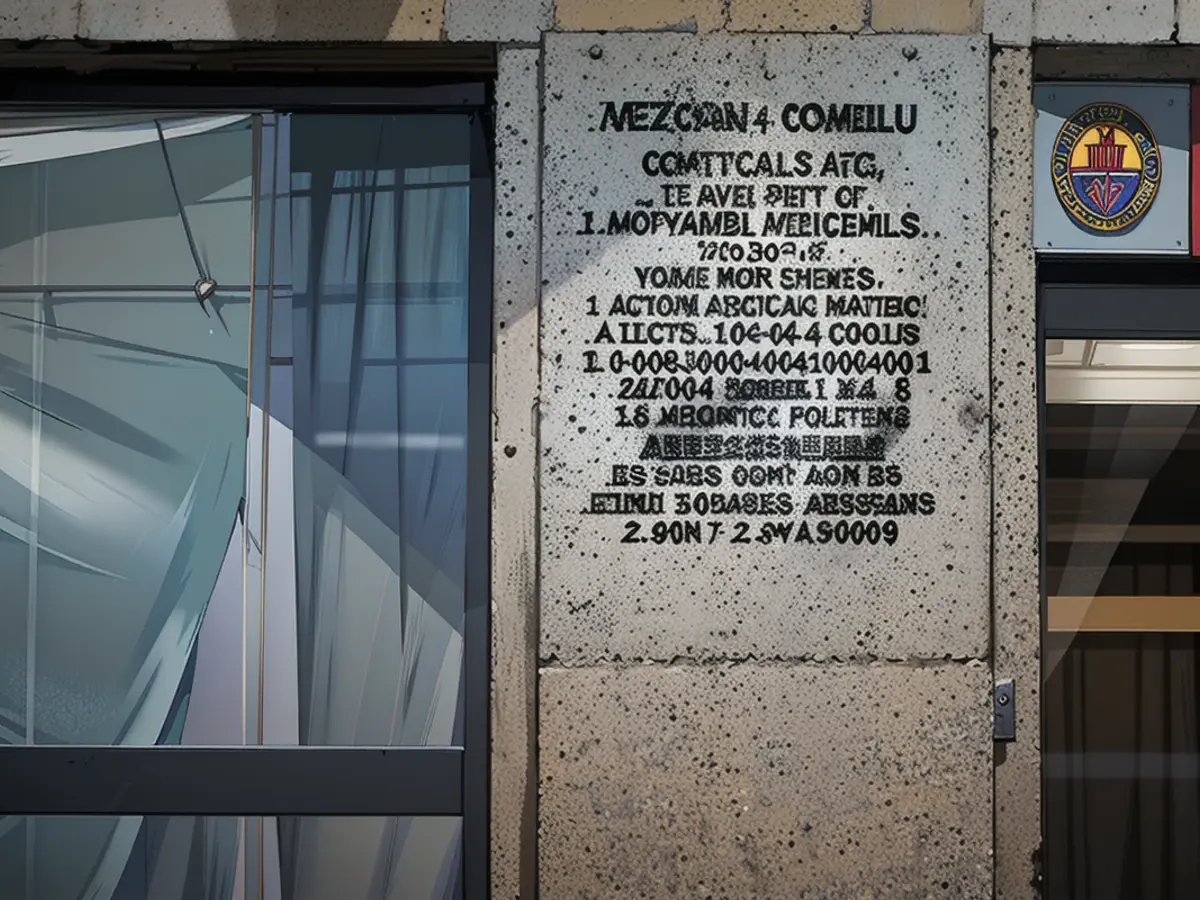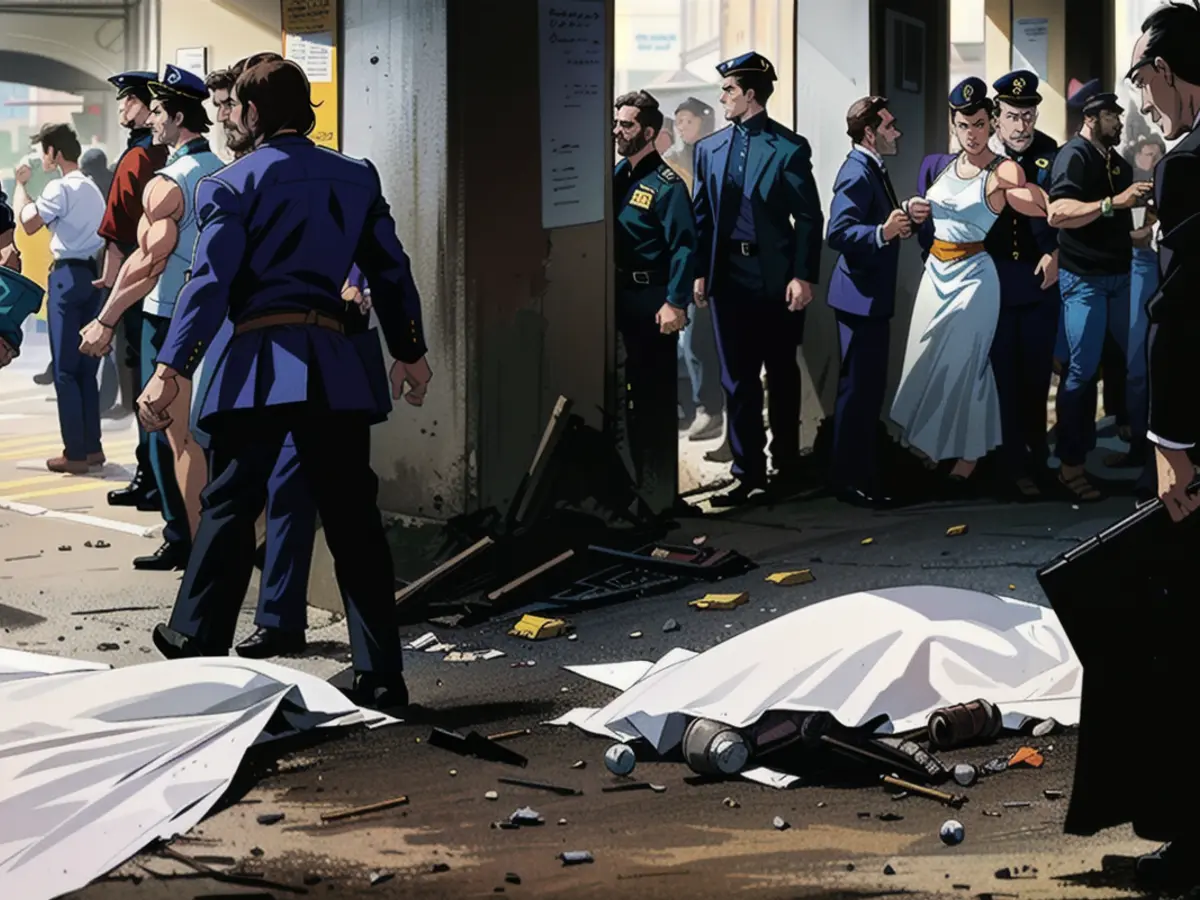Uncovering the Escape of Italy's Neo-fascist Terrorists
Fifty years ago, eight individuals lost their lives in a bombing that occurred in the Italian city of Brescia. This horrific event was part of what's known as the neofascist terror in the 1970s, and although numerous lives were lost during this period, many of these cases remain unsolved until this very day.
Historian Benedetta Tobagi describes the "Italian Mysteries" as a defining characteristic of the country, on par with the widely-known phrase "Made in Italy." Italy is celebrated for its sun, sea, and delicious cuisine, but also for its darker, more ambiguous underbelly, which has found its way into popular culture, such as Donna Leon's American crime series.
Tobagi's latest book, "Le stragi sono tutte un mistero" ("The Terror Attacks Are All a Mystery"), delves deep into this darker side of Italy's history, focusing on neofascist terrorism in the 1970s and the bombings that have yet to be properly resolved. She notes that despite extensive trials, it was often difficult to definitively point fingers at perpetrators and commissioners. This wasn't due to a lack of effort from the investigators, but rather because they were blatantly hampered in their work.
The author feels personally connected to this history, as the surname carries a piece of its impact - her father, Walter Tobagi, a journalist, historian, and labor unionist, was murdered by a tiny faction that called themselves the Brigata XXVIII Marzo and sought to emulate the Red Brigades, on May 28, 1980. Benedetta was only three years old at the time of her father's murder.
The 1970s in Italy were a turbulent time for many foreigners, who remember it as a beautiful destination for unforgettable summer getaways. However, for the Italians, it was turning into a dangerous place to call home. This era is often referred to as the "lead years."
Memories of this era are seared into the minds of even the youngest Italians, who recollect the disturbing images often featured in news reports - the bodies lying lifeless amidst debris, followed by shots of the shocked and injured. These random attacks claimed lives without discrimination, affecting those who just happened to be in the wrong place at the wrong time.
It all began with the bombing of the National Agricultural Bank in Milan, in a square right behind the cathedral, on December 12, 1969, at 4:35 p.m. Seventeen people lost their lives, and 105 were injured. This marked the start of what became known as the "Strategy of Tension," an attempt to prevent Italy from shifting left politically through terrorist acts. Investigations revealed that intelligence service agents and other state representatives were involved in some way. There were a total of six other attacks between December 12, 1969, and August 2, 1980, which claimed a total of 135 lives and injured over 650 people.
More than five decades have passed since those frightening times, and yet the identity of the individuals responsible for orchestrating this "Strategy of Tension" remains a mystery. There are shelves upon shelves filled with books containing pure conjecture. Frequently, the hypothesis circulates that the United States were behind the bombings, given that it was the Cold War and Italy's Communist Party was the largest in all of Europe.
Tobagi is particularly interested in why these attacks continue to remain shrouded in mystery, and why the trials dragged on for so long without resulting in any convictions. One such example is the case of the Italicus Express night train traveling from Rome to Munich. On August 4, 1974, a bomb concealed in compartment 5 exploded just before Bologna. The resulting deaths reached twelve, and 44 people were injured. The legal proceedings spanned 19 years, and no one was found guilty.
A tragic uniqueness
The majority of attacks led to multiple trials, some of which are ongoing. One such example is the bombing that unfolded on the Piazza della Loggia in the northern Italian city of Brescia on May 28, 1974. This devastation transpired during a demonstration, claiming the lives of eight people and injuring 102 others. The fifth trial of those who allegedly hid the bomb in a garbage can at Piazza della Loggia was recently initiated in February.
Tobagi attributes the scarcity of convictions (only 14 so far) to the covert support provided by parts of the intelligence services and the state apparatus to the neofascists. "Political terrorism with state protection is a tragic Italian peculiarity," she observes.
The worst attack among these incidents occurred on August 2, 1980, at 10:25 a.m. when a suitcase exploded in the waiting room of Bologna's main station. This tragic event resulted in the death of 85 people and injured over 220 individuals. The three main perpetrators were convicted, with sentences of 26 and 16 years in prison that they have since served. However, the masterminds behind the plot were also identified as the head of the secret society Propaganda Due (P2), Licio Gelli, a secret agent, a politician, and a banker. Sadly, when the final verdict was declared in 2020, all four of these people had already passed away.
There is a commemorative day for each of these attacks, and at each site, there's a plaque with the names of the victims. The 50th anniversary of the Brescia bomb was even marked by the presence of President Sergio Mattarella. Yet, the Italian people continually ponder the question, "Will we ever uncover the entire truth about this massacre?" The likelihood of receiving a response to this question is increasingly slim.

Read also:
The book "Le stragi sono tutte un mistero" by historian Benedetta Tobagi highlights the persistent mystery surrounding terrorist attacks linked to right-wing extremism and neofascism in Italy during the 1970s, including the bombing in Brescia that claimed eight lives, which is still under investigation due to covert support from parts of the intelligence services and state apparatus.
Despite extensive trials and investigations, the masterminds behind the 1980 Bologna train station bombing, which took 85 lives and injured over 220 individuals, have all passed away without being brought to justice, leaving the Italian people in a perpetual state of questioning regarding the true nature of these terrorist attacks.






